
by John P. Pratt
24 May 2015, Firstfruits (Enoch, Priest, Hebrew)
©2015 by John P. Pratt. All rights Reserved.
| 1. The Prophetic Periods |
| 1.1 "Weeks" of 728 Years |
| 1.2 "Days" of 104 Years |
| 1.3 Begins in 4005 BC |
| 2. The Prophecy |
| 2.1 Enoch Born |
| 2.2 Adam Dies & Enoch Translated |
| 2.3 The Flood, Abraham and Israel |
| 2.4 Genesis & the Promised Land |
| 2.5 House of David & of God |
| 2.6 Resurrection & Dispersion |
| 2.7 Sevenfold Doctrine |
| 2.8 America & Reformation |
| 2.9 Restoration & Wicked Destroyed |
| 2.10 Final Judgment |
| 3. Conclusion |
| Notes |
 |
The Book of Enoch devotes several chapters to describe what is called in my work the Enoch Calendar. It is basically a solar calendar with years of 364 days which begins in the spring. The week is the fundamental unit and every year contains an exact number of weeks. That is, 364 days equal exactly 52 weeks. When needed every few years an entire extra week is added so that the year always begins on a Sunday on or after the first day of spring (the vernal equinox, about 20-21 March). The year is divided into four equal seasons of 13 weeks, each beginning on a Sunday. Each season has three months of 30 days and one special holy day for the equinoxes (spring and autumn) and solstices (summer and winter, see Figure 1). My interpretation of the calendar has been given in several earlier papers.[2]
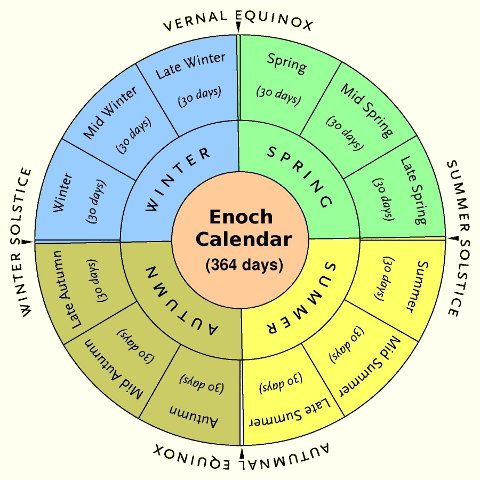 |
The prophecy is contained in Enoch 92 (Laurence version) or 93 (later versions). It is discussed in detail in Section 2. Here we discuss only the broad features which allow it to be mapped into history.
The prophecy divides the history of the earth from the beginning with Adam down to the Final Judgment into ten "weeks". It doesn't define how long a week is, but it is understood that a week has seven "days". Are all the days of equal length, at least in terms of Enoch years? Because the precedent is that days are all essentially the same length, let us take for a working hypothesis that history is divided into 70 "days" each consisting of the same number of Enoch years.
Because it is an ancient tradition that this earth's temporal history is 7,000 years long (Barnabas 13:4,6), which has been confirmed in modern scripture (D&C 77:6), it is tempting to choose the obvious division of one "day" of the prophecy equals exactly 100 years. Before jumping to that conclusion, let us consider more of what is actually included in the prophecy.
If we look a little deeper at the details, we see that Enoch includes the final Judgment Day within his Ten Week Prophecy. The Book of Revelation, however, clearly indicates that the final judgment occurs after the "little season" following the Millennium (seventh thousand year period) (Rev. 20:7,12). All of my work indicates that the little season is about 200 years, depending on the sacred calendar used. For example, on a calendar that divides history into twelve parts, the total history can be counted as 7,200 years, or twelve periods of 600 years each.
In the case of the Enoch Calendar, the obvious choice for this prophecy, there is also an obvious unit of time to use. The Lord tells us that He sometimes counts years as days (Num.14:34). It has been shown in earlier papers that this is the case for many sacred calendars. In particular, there is a "great year" on the Enoch calendar comprising 364 years (following the pattern that one year has 364 days).[3] Two of those great years comprise 728 years. Ten weeks of 728 years each would equal 7,280 years, which is just right to include the "little season" after the Millennium if one begins with the Beginning of Mortality, which has been proposed in an earlier article to have begun exactly 4,000 years before the birth of Jesus Christ.[4] Thus, it is proposed that each of the "weeks" of the Ten Week Prophecy equals exactly 728 Enoch years.
The length of each "day" is probably 104 years (7 x 104 = 728). That makes a nice unit to match the Enoch Calendar. The pattern of the division of the day into four parts (morning, afternoon, evening, and night) matches the division of the year into four parts (spring, summer, autumn and winter). If one "day" of Enoch's Prophecy is 104 years, then each quarter-day period would be 26 years (4 x 26 = 104). Keeping in mind that this is a work in progress, let us then adopt that model and see if it seems to match the prophecy.
There is a natural starting point for the Enoch Calendar. It was determined by other criteria in the former papers already referenced. That starting point is in the spring of the year 4005 BC. It is not required here to repeat all of the reasons, but one obvious example is that when one counts each year as days, then years are grouped also by sevens like days of the week. That is, a SUNDAY year is followed by a MONDAY year, etc. Those weeks of years are the same for all of the sacred calendars. In particular, the Hebrew Calendar groups years in that way and they are the same for the Enoch Calendar. The Great Year of 364 Enoch years must begin in a year which is a SUNDAY year. 4005 BC is one such year near the Beginning of Mortality which occurred in 4001 BC.
Historians use the AD/BC year designations, as do most people. Astronomers who are more interested in the meaning of the numbers simply use the AD designations using both positive and negative numbers. The year before AD 1 is called 0 rather than 1 BC. Similarly the year 2 BC is renamed -1. The astronomical designation is used in this article because it is desired to see the symmetry of the system around the birth of Jesus Christ in the year AD 0 (1 BC). Thus, in that notation, the beginning of Enoch's Ten Week Prophecy was in the spring of the year -4004 (4005 BC).
Let us now read through the prophecy verse by verse and week by week. Some events will be easy to identify, such as Enoch telling us on which day of which week he was born. Others are uncertain, not always because of their language which can be precise, but in our ignorance of what happened in certain time intervals. Each of the ten weeks is given a section: the first week is discussed in Section 2.1 of this article. Most sections contain only a few sentences about what will happen in a 728-year period. Only twice in the revelation is an event pinpointed to an exact "day" of the week being discussed. Those events are the birth of Enoch and Final Judgment.
The preface to the prophecy says that this information was contained in a book or tablet from heaven and from what was shown him by angels. It is clearly presented as a revelation of what would be the destiny of the world, or more particularly of the chosen people. He describes the content of the vision thus:
"And Enoch said, Concerning the children of righteousness, concerning the elect of the world, and concerning the plant of righteousness and integrity.
Concerning these things will I speak, and these things will I explain to you, my children: I who am Enoch. In consequence of that which has been shown to me, from my heavenly vision and from the voice of the holy angels have I acquired knowledge; and from the tablet of heaven have I acquired understanding." (Enoch 92:2-3)
Before reading through the prophecy, you may wish to consider what you would have revealed to Enoch as being the key events in the history of the chosen people throughout their entire seven thousand year continuance. What would you include?
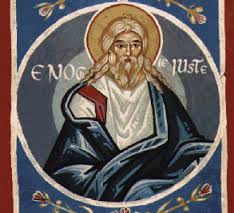 |
"I have been born the seventh in the first week, while judgment and righteousness wait with patience." (Enoch 92:4)
This sentence seems crafted to have two separate meanings. First, it seems clearly to imply the words in brackets: "I have been born [on] the seventh [day] in the first week." We do the same thing in English, "I was born on the first of the month," where "day" is implied after "first". The seventh 104-year day of that week according to the proposed model began in -3380. The birth year proposed for Enoch in my work is -3377, just three years later.
In another statement in this prophecy the word "day" is explicitly stated. This may be a clue that this sentence was meant to convey a double meaning. In particular, Enoch was the seventh patriarch counting inclusively from Adam, who was the first. This meaning may help us understand the prophecy about the next week also.
It is also important that the entire period is one described as being essentially righteous, in contrast to future weeks. So while we might have emphasized the Fall, it is, after all, a prophecy being given to Enoch and he is emphasized in it. Similarly, in the prophecy given to Nebuchadnezzar, he was the head of gold (Daniel 2:38) even though Assyria had been a great world power before him.
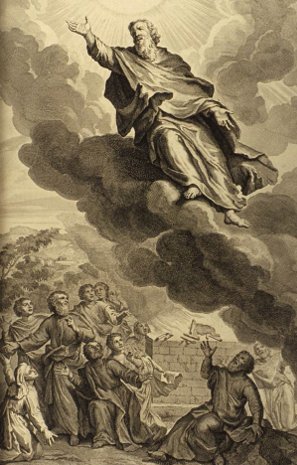 |
The text describing the second week is as follows:
"in the second week, great wickedness shall arise, and fraud shall spring forth. In that week the end of the first shall take place, in which mankind shall be safe. " (Enoch 92:5-6)
In contrast to the first week of righteousness, the second describes a world in which wickedness and fraud arise. The next sentence seems cryptic, so let's look at another translation:
"therein the first consummation will take place. But therein also a certain man shall be saved." [5]
What is meant by "the end of the first" or "the first consummation"? Adam was implicitly referred to as "the first", meaning "the first man" in the description of first week events. The date proposed in my work for the death of Adam is -3070 which falls into this second week. To me it appears likely that this prophecy is telling us that Adam will die during the second week.
Looking at the second translation, we are next told that in the same second week a man would be saved. What does that mean? Because the first week emphasized something in Enoch's personal life (his birth), perhaps this one does also. Enoch was translated during the proposed interval of that second week. That appears to me to be the meaning.
Moreover, those proposed meanings tie together: the first patriarch will die but the seventh will be translated. They seem like two sides of the same coin. Thus, those are my proposed interpretations.
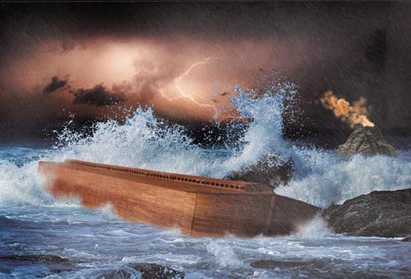 |
"But when it [the second week] is completed, iniquity shall grow up; and he shall execute the decree upon sinners. Afterwards, in the third week, during its completion, a man of the plant of righteous judgment shall be selected; and after him the Plant of Righteousness shall come for ever." (Enoch 92:7-8)
Here we see that the wickedness of the world keeps increasing until it is ripe with iniquity (grown up). Then a judgment is issued against the sinners. What could that be? This is the time period in which the Great Deluge occurred (-2342) and that event appears to be both the obvious and the correct interpretation of this executed decree.
In the above citation of the Laurence translation the bracketed phrase is my insertion. Apparently the orginal had the word "it" as shown. In Laurence's version he inserted his own interpretation (indicated by his use of italics) of "it" as referring to the first week. That seems very unnatural to jump back in time and appears incorrect to me.
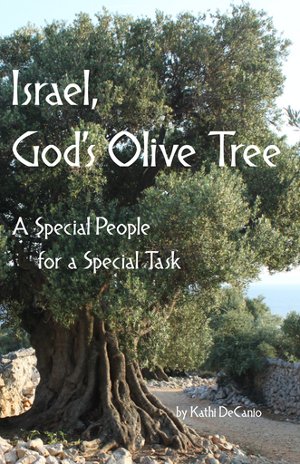 |
"a certain man shall be elected as the plant of righteous judgment, and after him one other shall emerge as the eternal plant of righteousness."[7]This translation more clearly describes two men, with the second being identified with the eternal plant. That sounds like Abraham and Jacob. Many times in scripture the House of Israel (Jacob) is compared to the sacred olive tree (Romans 11:24, Jacob 5:3). Because Enoch says this prophecy is about the children of righteousness, the elect of the world, and the plant of righteousness, this meaning seems like the best interpretation of this verse of the prophecy.
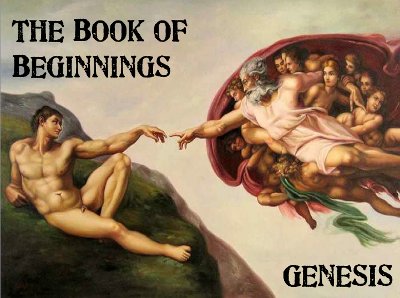 |
"Subsequently, in the fourth week, during its completion, the visions of the holy and the righteous shall be seen, the order of generation after generation shall take place, and a habitation shall be made for them." (Enoch 92:9)
What are the visions of the holy and righteous? Who are the holy and righteous? Does this mean that the visions were given to the holy and righteous or that the visions were about them? Let's look at another translation:
"visions of the old and righteous ones shall be seen"[8]
This translation seems to answer one question: the visions were about the "old and righteous". Moses lived and the Exodus took place during this week of time. This prediction seems not to speak of miracles such as the Parting of the Red Sea, but rather of the vision of Moses when he was given the Book of Genesis (Moses 1:40-41). That is the book in the Bible that speaks about the "old and righteous ones". Moreover it lists "the order of generation after generation" of all of those men well enough to connect all the way down through Joseph of Egypt.
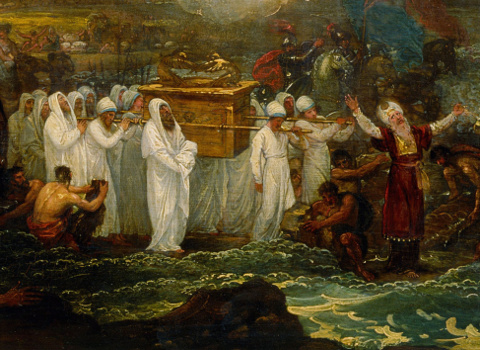 |
The most likely meaning of the last phrase that a holy habitation would be prepared for the righteous ones does indeed seem to refer to the House of Israel (about whom this vision pertains) entering the Promised Land of Canaan. It was not the Exodus from bondage that was mentioned, but rather the entering of a new habitation. So you can give yourself partial credit on this one! Note that Moses and Joshua are not mentioned but rather the events they participated in.
The fifth 728-year week extends from the year -1092 through -365. Here is the prophecy for that time interval:
"Then in the fifth week, during its completion, the house of glory and of dominion shall be erected for ever." (Enoch 92:9)
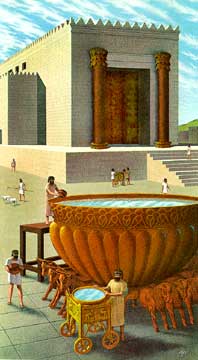 |
Then a second look raised a question. It says a "house of glory and of dominion". Dominion? The temple does not seem like a house of dominion. Moreover, it says the house is to be "erected for ever". That temple was burned, and even after being rebuilt a later prophecy in this series seems to clearly state that even the second temple would be destroyed.
 |
The interpretation proposed here is that the prophecy has a double meaning of predicting both the house of David and the house of God. Temple refers to house. We've already seen that double meanings are implied in other places in this prophecy.
The sixth 728-year week extends from the year -364 through +363. Here is the prophecy for that time interval:
"After that, in the sixth week, all those who are in it shall be darkened, the hearts of all of them shall be forgetful of wisdom, and in it shall a Man arise and come forth. And during its completion He shall burn the house of dominion with fire, and all the race of the elect root shall be dispersed." (Enoch 92:10-11)
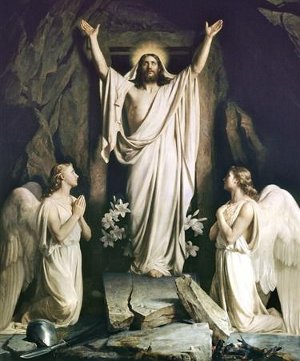 |
Note that the birth of Christ in the year 0 is at the exact midpoint of this interval. What did you put down as the greatest event of this interval? The birth of Christ was extremely important event in history, but the holiest day of all history according to the sacred calendars was the date of the Resurrection of Jesus Christ. Enoch says that a man would "arise and come forth". That certainly could be a reference to the Resurrection, that the Son of Man would indeed "arise and come forth" from the sepulchre.
This seems to be an example of a common practice in revelation to use veiled language that is only obvious after the event has been fulfilled. The purpose of most prophecy appears not to be to satisfy men's curiosity, but to be a testimony afterward of God's foreknowledge of the end from the beginning. There is little doubt that this prophecy refers to the Resurrection of Jesus Christ.
The next sentence verifies that our above interpretation of the "house of dominion" refers to the temple in Jerusalem because it prophesies that that house will be burned in this time period. Sure enough, the temple was destroyed in the year 70 such that not one stone was left upon another.
Moreover it is stated that the race of the elect root would be dispersed which is exactly what happened at that time to the Jews in Jerusalem. Remember that at the beginning Enoch said that the revelation would concern the chosen people, not the world in general. This prophecy exactly fits that agenda.
The seventh 728-year week extends from the year 364 through 1091. Here is the prophecy for that time interval:
"Afterwards, in the seventh week, a perverse generation shall arise; abundant shall be its deeds, and all its deeds perverse. During its completion, the righteous shall be selected from the everlasting plant of righteousness; and to them shall be given the sevenfold doctrine of his whole creation." (Enoch 92:12)
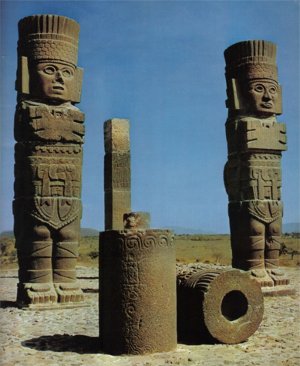 |
Those of Israel not already dispersed by Assyria and Babylon centuries before were dispersed during the sixth week from Jerusalem. This prophecy could refer to the lost tribes of Israel but seeing as they are lost, we don't know what happened to them during this period.
So the best I can do is to suggest that so far Enoch has a great record of direct hits with his prophecy, so perhaps we can just take this as a statement of what did happen to all or part of Israel wherever they were. Perhaps someday we will find out what the sevenfold doctrine of the whole creation is that was given to them, but if I were to comment here it would be only speculation.[9]
Here it should be noted that in some versions of the Book of Enoch, someone felt that Enoch must have made a mistake in dividing history into ten parts. It was well known that history would last 7,000 years and it was likely concluded that each "week" should be 1,000 years and so the description of the last three weeks was moved to be elsewhere (two chapters earlier) in the text. Of the three translations considered in this article, only Laurence's keeps the prophecy intact.
The eighth 728-year week extends from the year 1092 through 1819. Here is the prophecy for that time interval:
"Afterwards there shall be another week, the eighth of righteousness, to which shall be given a sword to execute judgment and justice upon all oppressors. Sinners shall be delivered up into the hands of the righteous, who during its completion shall acquire habitations by their righteousness; and the house of the great King shall be established for celebrations for ever." (Enoch 92:13-14)
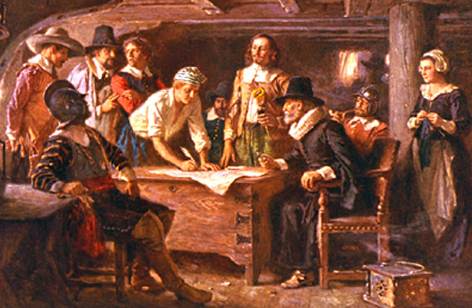 |
Could this not refer to the pilgrims who had been sorely oppressed and found their way to new habitations in America? Did not the invention of the printing press and the translation of the Bible into European languages give them a "sword of truth" which with to cut through the bonds of captivity and allow the Protestant Reformation? Did not the entire Renaissance Period become an age of enlightenment and discovery of truths which freed people from the bondage of ignorance?
 |
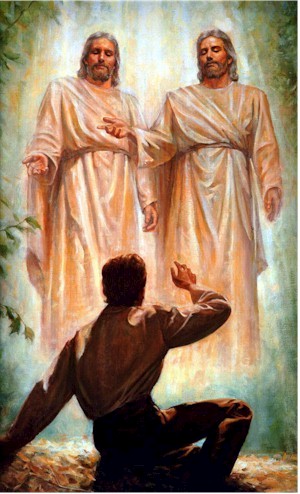 |
"After this, in the ninth week, shall the judgment of righteousness be revealed to the whole world. Every work of the ungodly shall disappear from the whole earth; the world shall be marked for destruction; and all men shall be on the watch for the path of integrity." (Enoch 92:14-15)
The obvious meaning of this prophecy is that it refers to the righteous judgment which is coming which will entirely destroy the wicked from the earth before the Second Coming of the Savior. The removal of the wicked is explicitly stated here and that is clearly one of the most important events of this week (along with the Second Coming of Christ).
The next clause is interesting. It states that all men will be "on the watch" for the "path of integrity" which sounds a lot like the "straight and narrow path". What does "on the watch" mean? Here it may help to look at another translation:
"all men shall direct their sight to the path of righteousness"[11]
That clarifies the meaning that all men are looking at the path, rather than looking for the path. That makes more sense because this event is mentioned after the destruction of the wicked, where only the righteous survive.
This part of the prophecy may tie directly to the Restoration of the Gospel. Notice that the first sentence contains the phrase "righteousness be revealed to the whole world". The revelations which began on the first day of this 728-year period, including the Book of Mormon and Doctrine & Covenants, have already gone world wide, and we are still in the first couple of hundred years of this ninth week.
If all survivors are going to be looking at the righteous path, then it would seem important for that path to have been restored and findable. Thus it appears that the restoration of the Gospel may indeed be implied in Enoch's prophecy.
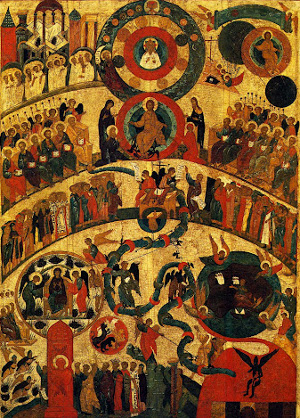 |
"And after this, on the seventh day of the tenth week, there shall be an everlasting judgment, which shall be executed upon the Watchers; and a spacious eternal heaven shall spring forth in the midst of the angels. The former heaven shall depart and pass away; a new heaven shall appear; and all the celestial powers shall shine with sevenfold splendour for ever." (Enoch 92:16-17)
This is the only time in the entire prophecy other than Enoch's birth date where the exact day of the week is given. It is not surprising that it occurs on the last day, because the Judgment is sometimes called the Last Day. The final 104-year day of the 728-year week begins in 3172. Thus, according to my interpretation of the book, Enoch predicts that the Final Judgment will occur in the interval from AD 3172 to 3275.
After that there will be a new heaven because the old one will pass away, just as described in Revelation 21:1.
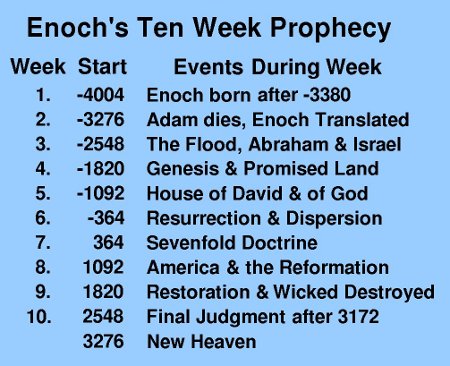 |